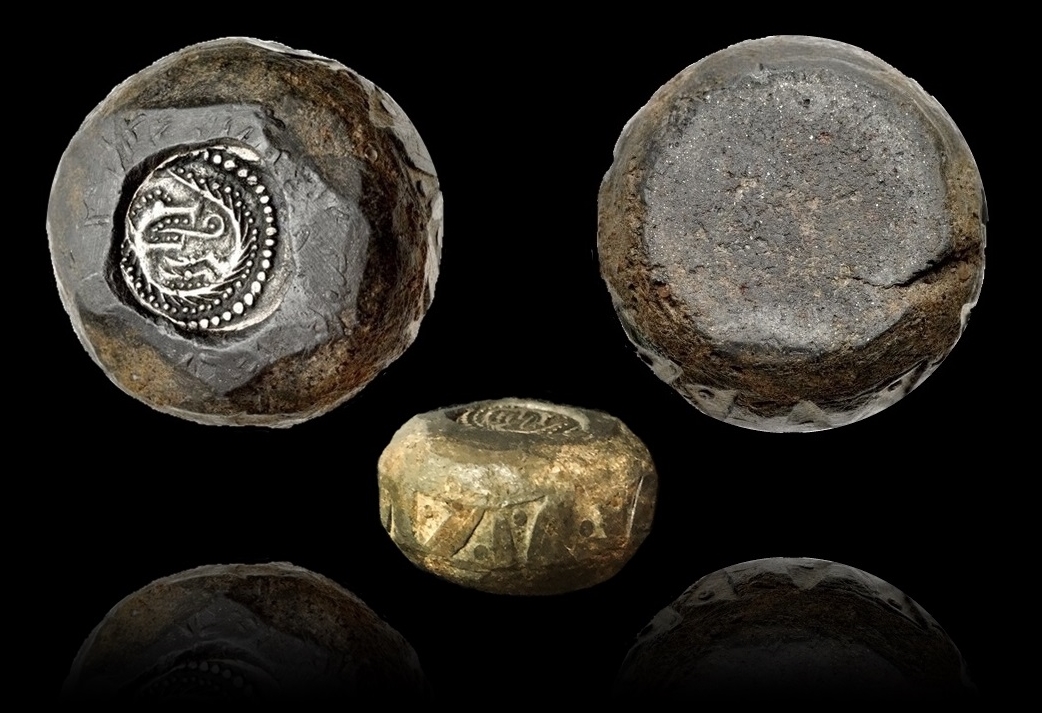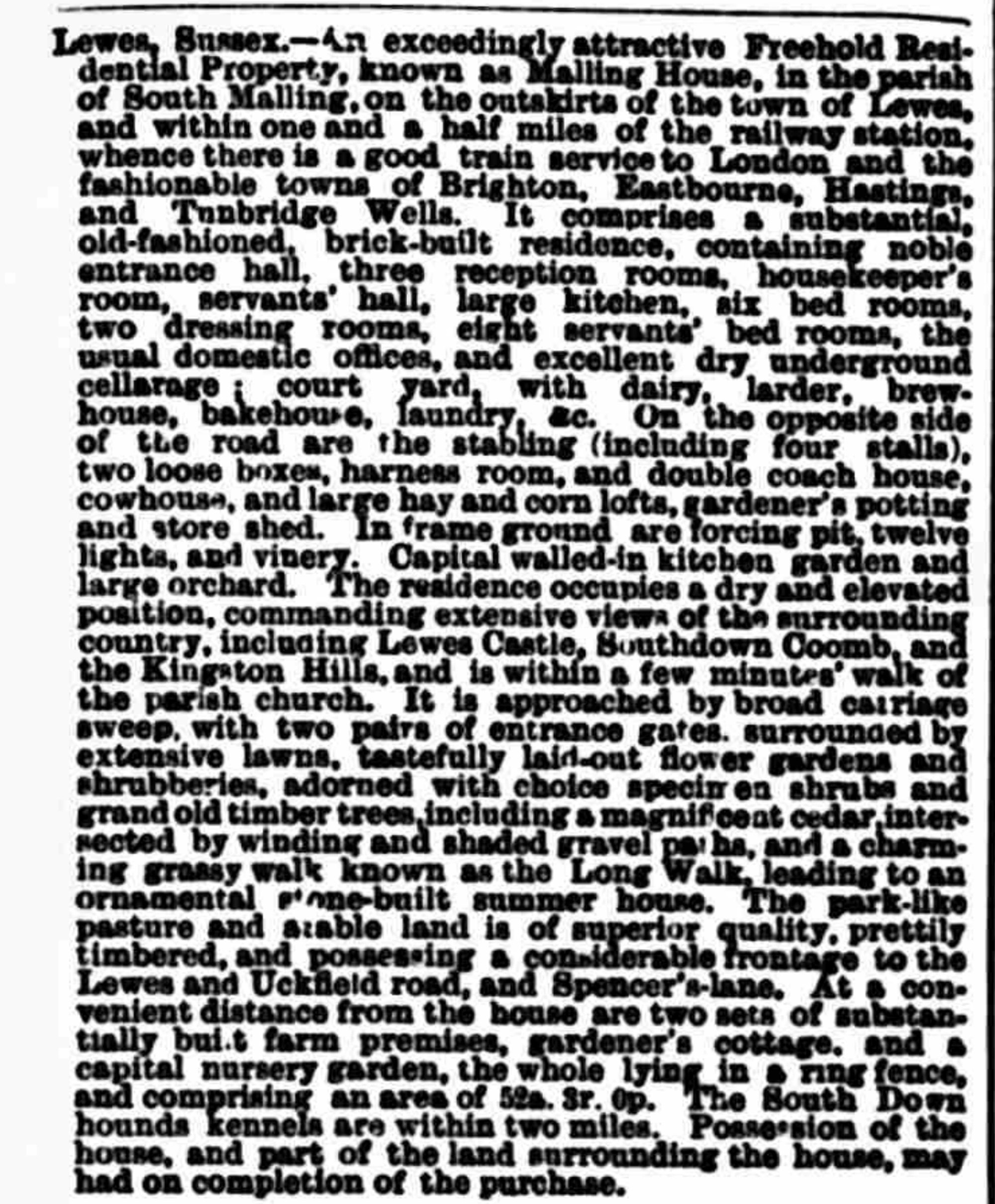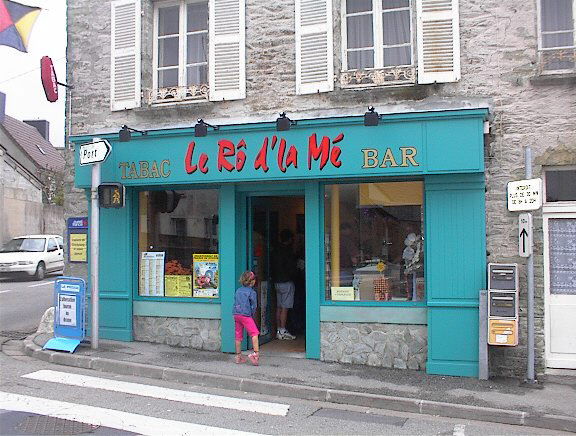|
Mayfield And Five Ashes
Mayfield and Five Ashes is a civil parish in the High Weald of East Sussex, England. The two villages making up the principal part of the parish lie on the A267 road between Royal Tunbridge Wells and Eastbourne: Mayfield, the larger of the two villages is south of Royal Tunbridge Wells; with Five Ashes being further south. On 1 April 1999 the parish was renamed from "Mayfield" to "Mayfield & Five Ashes". Mayfield village Every September the village hosts its annual carnival. This is to commemorate the four Protestants who were executed here on 24 September 1556, and being burnt at the stake in the village on ground that is opposite what is now Colkins Mill Church in Station Road. They are also commemorated in Lewes. The festivals are part of the Sussex bonfire tradition of marking the execution of Protestants by Queen (Bloody) Mary, and later, the discovery of the Catholic Gunpowder Plot. The procession marches through the village by torchlight on the third Saturday in Se ... [...More Info...] [...Related Items...] OR: [Wikipedia] [Google] [Baidu] |
Wealden (UK Parliament Constituency)
Wealden may refer to: * Wealden District, a local government district in the county of East Sussex, England * Wealden Group, a group of rock strata in southern England, occasionally also referred to as the Wealden Supergroup * Wealden iron industry, was located in the Weald of south-eastern England. * Wealden (UK Parliament constituency), East Sussex constituency in the British House of Commons * Wealden hall house, is a type of vernacular medieval timber-framed hall house traditional in the south east of England. * Wealden Lake, a lake that existed during the Cretaceous * Wealden Line See also * Weald (other) {{disambig, geo ... [...More Info...] [...Related Items...] OR: [Wikipedia] [Google] [Baidu] |
Domesday Book
Domesday Book ( ; the Middle English spelling of "Doomsday Book") is a manuscript record of the Great Survey of much of England and parts of Wales completed in 1086 at the behest of William the Conqueror. The manuscript was originally known by the Latin name , meaning "Book of Winchester, Hampshire, Winchester", where it was originally kept in the royal treasury. The ''Anglo-Saxon Chronicle'' states that in 1085 the king sent his agents to survey every shire in England, to list his holdings and dues owed to him. Written in Medieval Latin, it was Scribal abbreviation, highly abbreviated and included some vernacular native terms without Latin equivalents. The survey's main purpose was to record the annual value of every piece of landed property to its lord, and the resources in land, labour force, and livestock from which the value derived. The name "Domesday Book" came into use in the 12th century. Richard FitzNeal wrote in the ( 1179) that the book was so called because its de ... [...More Info...] [...Related Items...] OR: [Wikipedia] [Google] [Baidu] |
Egbert Of Wessex
Ecgberht (died 839), also spelled Egbert, Ecgbert, Ecgbriht, Ecgbeorht, and Ecbert, was King of Wessex from 802 until his death in 839. His father was King Ealhmund of Kent. In the 780s, Ecgberht was forced into exile to Charlemagne's court in the Frankish Empire by the kings Offa of Mercia and Beorhtric of Wessex, but on Beorhtric's death in 802, Ecgberht returned and took the throne. Little is known of the first 20 years of Ecgberht's reign, but it is thought that he was able to maintain the independence of Wessex against the kingdom of Mercia, which at that time dominated the other southern English kingdoms. In 825, Ecgberht defeated Beornwulf of Mercia, ended Mercian Supremacy at the Battle of Ellandun, and proceeded to take control of the Mercian dependencies in southeastern England. In 829, he defeated Wiglaf of Mercia and drove him out of his kingdom, temporarily ruling Mercia directly. Later that year Ecgberht received the submission of the Northumbrian king at Dore, S ... [...More Info...] [...Related Items...] OR: [Wikipedia] [Google] [Baidu] |
Wessex
The Kingdom of the West Saxons, also known as the Kingdom of Wessex, was an Anglo-Saxon Heptarchy, kingdom in the south of Great Britain, from around 519 until Alfred the Great declared himself as King of the Anglo-Saxons in 886. The Anglo-Saxons believed that Wessex was founded by Cerdic and Cynric of the Gewisse, though this is considered by some to be a legend. The two main sources for the history of Wessex are the West Saxon Genealogical Regnal List and the ''Anglo-Saxon Chronicle'' (the latter of which drew on and adapted an early version of the List), which sometimes conflict. Wessex became a Christianity, Christian kingdom after Cenwalh () was baptised and was expanded under his rule. Cædwalla later conquered Kingdom of Sussex, Sussex, Kingdom of Kent, Kent and the Isle of Wight. His successor, Ine of Wessex, Ine (), issued one of the oldest surviving English law codes and established a second West Saxon bishopric. The throne subsequently passed to a series of kings wit ... [...More Info...] [...Related Items...] OR: [Wikipedia] [Google] [Baidu] |
Malling House
Malling House is a 17th-century country house in Lewes, East Sussex, England. It is a Grade I listed building and serves as the headquarters of Sussex Police Sussex Police are the territorial police force responsible for policing in the whole of Sussex. Their jurisdiction covers the ceremonial counties of East Sussex and West Sussex. Their headquarters are in Malling House, Lewes, East Sussex. Hi .... The house was built in red and grey brick in the mid–17th century for the Spence family, extended in the late 17th century, refronted circa 1720–1726 and extended again in the 20th century. It is built in two storeys with attics and cellars with a roof of Horsham slabs. The frontage has 9 regular bays and a Tuscan door frame with pediment. To the right of the building is a 20th-century extension. It was acquired by the East Sussex Constabulary in 1948 for use as the police force headquarters, passing in turn in 1968 to the newly formed Sussex Constabulary to be used for ... [...More Info...] [...Related Items...] OR: [Wikipedia] [Google] [Baidu] |
Rebus
A rebus ( ) is a puzzle device that combines the use of illustrated pictures with individual letters to depict words or phrases. For example: the word "been" might be depicted by a rebus showing an illustrated bumblebee next to a plus sign (+) and the letter "n". It was a favourite form of Heraldry, heraldic expression used in the Middle Ages to denote surnames. For example, in its basic form, three salmon (fish) are used to denote the surname "Salmon (surname), Salmon". A more sophisticated example was the rebus of Bishop Walter Hart, Walter Lyhart (d. 1472) of Norwich, consisting of a stag (or Deer, hart) lying down in a conventional representation of water. The composition alludes to the name, profession or personal characteristics of the bearer, and speaks to the beholder ''Non verbis, sed rebus'', which Latin expression signifies "not by words but by things" (''res, rei'' (f), a thing, object, matter; ''rebus'' being ablative plural). Rebuses within heraldry Rebuses are ... [...More Info...] [...Related Items...] OR: [Wikipedia] [Google] [Baidu] |
New World
The term "New World" is used to describe the majority of lands of Earth's Western Hemisphere, particularly the Americas, and sometimes Oceania."America." ''The Oxford Companion to the English Language'' (). McArthur, Tom, ed., 1992. New York: Oxford University Press, p. 33: "[16c: from the feminine of ''Americus'', the Latinized first name of the explorer Amerigo Vespucci (1454–1512). The name ''America'' first appeared on a map in 1507 by the German cartographer Martin Waldseemüller, referring to the area now called Brazil]. Since the 16th century, the term "New World" has been used to describe the Western Hemisphere, often referred to as the Americas. Since the 18th century, it has come to represent the United States, which was initially colonial British America until it established independence following the American Revolutionary War. The second sense is now primary in English: ... However, the term is open to uncertainties: ..." The term arose in the early 16th ... [...More Info...] [...Related Items...] OR: [Wikipedia] [Google] [Baidu] |
Mayweed ''
{{Plant common name ...
Mayweed is a common name for two different species of flowering plants and also a name commonly used for several genera of the tribe Anthemideae whose species are currently in a flux of renaming: Species with the common name of mayweed: :'' Anthemis cotula'' :''Anthemis arvensis'' :'' Oncosiphon suffruticosus'' Genera commonly called mayweed: :''Matricaria'' :''Tripleurospermum ''Tripleurospermum'' is a genus in the Anthemideae, chamomile tribe within the Asteraceae, sunflower family. Mayweed is a common name for plants in this genus. Most of the species are from Europe and temperate Asia although a few are from North ... [...More Info...] [...Related Items...] OR: [Wikipedia] [Google] [Baidu] |
Middle English
Middle English (abbreviated to ME) is a form of the English language that was spoken after the Norman Conquest of 1066, until the late 15th century. The English language underwent distinct variations and developments following the Old English period. Scholarly opinion varies, but the University of Valencia states the period when Middle English was spoken as being from 1150 to 1500. This stage of the development of the English language roughly coincided with the High Middle Ages, High and Late Middle Ages. Middle English saw significant changes to its vocabulary, grammar, pronunciation, and orthography. Writing conventions during the Middle English period varied widely. Examples of writing from this period that have survived show extensive regional variation. The more standardized Old English literary variety broke down and writing in English became fragmented and localized and was, for the most part, being improvised. By the end of the period (about 1470), and aided by the movabl ... [...More Info...] [...Related Items...] OR: [Wikipedia] [Google] [Baidu] |
Old English
Old English ( or , or ), or Anglo-Saxon, is the earliest recorded form of the English language, spoken in England and southern and eastern Scotland in the Early Middle Ages. It developed from the languages brought to Great Britain by Anglo-Saxon settlers in the mid-5th century, and the first Old English literature dates from the mid-7th century. After the Norman Conquest of 1066, English was replaced for several centuries by Anglo-Norman language, Anglo-Norman (a langues d'oïl, type of French) as the language of the upper classes. This is regarded as marking the end of the Old English era, since during the subsequent period the English language was heavily influenced by Anglo-Norman, developing into what is now known as Middle English in England and Early Scots in Scotland. Old English developed from a set of Anglo-Frisian or Ingvaeonic dialects originally spoken by Germanic tribes traditionally known as the Angles (tribe), Angles, Saxons and Jutes. As the Germanic settlers ... [...More Info...] [...Related Items...] OR: [Wikipedia] [Google] [Baidu] |
Norman French
Norman or Norman French (, , Guernésiais: , Jèrriais: ) is a '' langue d'oïl'' spoken in the historical and cultural region of Normandy. The name "Norman French" is sometimes also used to describe the administrative languages of '' Anglo-Norman'' and '' Law French'' used in England. For the most part, the written forms of Norman and modern French are mutually intelligible. The thirteenth-century philosopher Roger Bacon was the first to distinguish it along with other dialects such as Picard and Bourguignon. Today, although it does not enjoy any official status outside of Jersey, some reports of the French Ministry of Culture have recognized it as one of the regional languages of France. History When Norse Vikings from modern day Scandinavia arrived in Neustria, in the western part of the then Kingdom of the Franks, and settled the land that became known as Normandy, these North-Germanic–speaking people came to live among a local Gallo-Romance–speaking ... [...More Info...] [...Related Items...] OR: [Wikipedia] [Google] [Baidu] |








